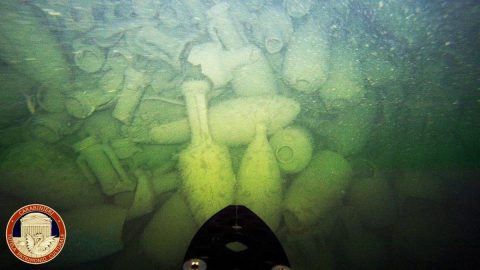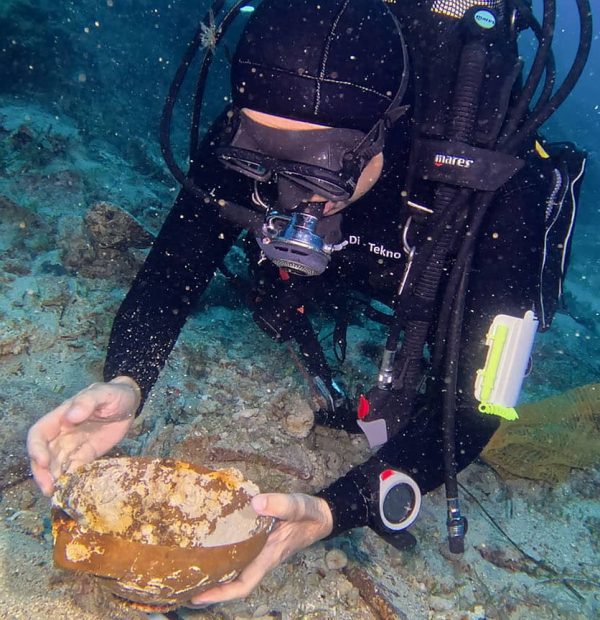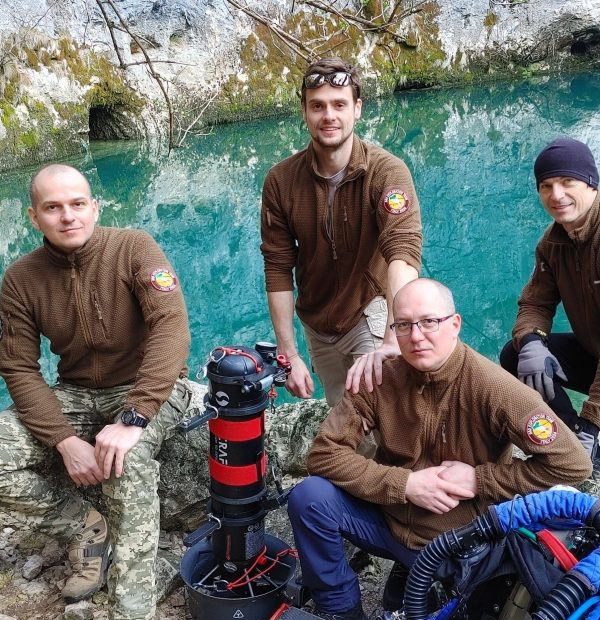Tuesday, 23 April 2024
Menu

The subject of dolphin therapy has appeared in the media many times in recent years. It came back particularly intensively with the idea of opening Poland’s first dolphinarium in Mszczonów. Fortunately this project fell through. However to this day a group of enthusiasts in the south of Poland have been trying to establish the so called Upper Silesian Centre for Dolphin Therapy. Several Polish divers have also become involved in this form of therapy involving animals.
Why is it worth taking a closer look at dolphin therapy? First of all because the matter is definitely ambiguous. There are many misinterpretations, misrepresentations and myths. As the health of children, big money, ethical behaviour towards animals and finally the vested interests of investors and owners of dolphin businesses are at stake, it is worth asking ourselves some difficult questions and presenting additional facts that have been scrupulously concealed by the promoters and owners of dolphin therapy centres.
It is worth pointing out that a large part of the enthusiasts for the dolphin therapy are really well-intentioned and simply focus on helping sick children or needy adults, probably without realising the dark side of the phenomenon. However, those who set up centres, send clients to dolphinariums abroad, make money from dolphin therapy and benefit from spending time with dolphins in captivity and thus pursue their passions, are absolutely aware of what they are doing. And where is the problem?
What is Dolphin Therapy? It is a form of therapy based on interaction with an animal where a dolphin is used to exercise in order to either improve selected functions of the patient’s body or to motivate the patient to complete the tasks prescribed in the classical course of therapy. The term “Dolphin Therapy” is however misleading and inaccurate. It suggests that the dolphin heals, or at least that it is the most important element of the therapy.
Some people also mention a form of dolphin therapy where the dolphin is supposed to heal with the ultrasounds emitted by its echolocation organ, but… there is no evidence for this and the scientific research carried out so far denies it to be real. Therefore we should rather talk about DAT – Dolphin Assisted Therapy.
First of all it should be noted that Dolphin Therapy Centres often offer treatment for illnesses that are … incurable, genetic etc. Such statements can be found, for example, on the website of the initiator of the – so far virtual – Upper Silesian Dolphin Therapy Centre. This is careless and irresponsible. It would be more honest to talk about possible development support or rehabilitation of people suffering from the diseases mentioned there.
What about the promise of healing through ultrasound emitted by the dolphin? What does the science say? Researchers at the Institute of Behavioral Research, Free University in Berlin analysed dolphin behaviour during 83 therapy sessions at the well-known ‘Dolphin Plus’ centre in the Florida Keys, USA. These studies did not confirm that the behaviour of any of the dolphins met even the minimum requirements of adequate ultrasound emission, in terms of intensity, duration of exposure and repetition, necessary for effective treatment. In 2003 the prestigious Journal of Theoretical Biology also published serious doubts about the possibility of using dolphin sounds.
This is a very important question. The studies that are quoted by the supporters of the dolphin therapy are mostly just records of observations, often unstructured and selective. The few scientific studies that do attempt to demonstrate the efficacy of the dolphin therapy are, in turn, riddled with methodological errors as shown by analyses of the available published studies that question their validity and reliability (Humphries, 2003 and Marino & Lilienfeld, 2007). Further recently published quasi-studies are similarly flawed.
Not only that! There are studies of a scientific nature – e.g. doctoral dissertations on the effects of dolphin therapy whose supervisor is a professor who is also head of the scientific board of a chain of commercial dolphinariums known for their infamous trade in dolphins and violations of the welfare of these animals in captivity. The conflict of interests is all too screaming.
Let us take as an example the use of dolphin therapy for the treatment of autism. In Poland many parents of children on the autism spectrum are considering using this form of animal therapy.
In February 2011, the German Association “Autism”, published a statement that there is no convincing evidence that dolphin therapy is an effective form of treatment for autism. In 2016, the British organisation “Research Autism”, which researches the effectiveness of various forms of autism therapy, while subscribing to the above, further added: “There are various ethical concerns with dolphin therapy, as well as the issue of physical danger to both humans and dolphins, which can be difficult to overcome”. In contrast, studies by Dr Tracy L. Humphries in 2003 questioned the effectiveness of dolphin therapy with disabled children aged six and younger. In contrast, Michael Westerveld, a neuropsychologist and paediatrician at Yale University School of Medicine in New Haven, Connecticut, states: “If there is any success, I would be more inclined to attribute it to the overall effects of interaction with animals. You can buy a puppy and see the same results.”
It is true that in some cases after sessions of dolphin therapy it is possible to see an improvement in the functioning of the affected children, especially in the areas of contact with the environment, attempts to speak, an improvement in mood, a greater motivation to learn new activities in the classical therapy.
However, it is worth noting what Dr. Lori Marino points out when analysing where the reports on the effects of different therapies often come from. In the case of dolphin therapy there are many simultaneous elements that can influence the appearance of positive changes. The problem is that perhaps only a few of these elements work. Perhaps it is the water activities in particular that bring about an improvement in the individual’s functioning, or perhaps it is the new approach of the new therapists and the stress-free sessions in a completely different environment, or perhaps it is the fact that the parents have started to show a completely different attitude and the “second breath”, enthusiasm and joy they have caught has subconsciously spread to the child…
Deena Hoagland, director of Island Dolphin Care (USA) and a therapist, has repeatedly stated that in her centre the dolphin is only a member of the therapy team and not something that cures the child on its own, and has stressed that treatment through echolocation has no scientific basis.
In 2007. Betsy Smith, the pioneer of dolphin therapy for autism, withdrew from research on dolphin therapy, openly stating that it was ineffective and primarily orientated to making money at the expense of the patients and their families. It is astonishing that many Dolphin Therapy Centres still today refer to her first scientific treatise from the nineties, regardless of the fact that the author of this dissertation is now strongly against dolphin therapy.
David Nathanson himself has also withdrawn from conducting and promoting the dolphin therapy. In 2007 he also said outright that he did not confirm the effects and phenomena of the dolphin ultrasound treatment of his dolphin patients.
Nathanson, after more than 30 years of practice, closed his centre in Florida and considered opening a therapy centre in the Cayman Islands in order to continue helping sick children. Even then, however, he was quite clear: “.The patient’s interaction with the dolphin is simply a form of reward for their efforts and participation in the exercises, not a therapy in itself”.
It is also interesting to note that after the publication of the results of the dolphin-robot study, showing that a live dolphin is not necessary to improve the functioning of sick children, Dr. Nathanson’s Dolphin-Human Therapy website disappeared from the internet. David Nathanson himself has also withdrawn from public life and ceased to support with his authority the various centres that invoke his name in their marketing material. He does not give interviews, does not publish and is virtually inaccessible.
Parents, succumbing to the charm of dolphins, do not even anticipate the risks behind interactions with these animals. First of all there is the risk of pathogens, as shown by the level of illness among those who work with marine mammals on a daily basis. Bacteria in exhaled air, faecal bacteria (dolphins excrete 4 times more than humans) and finally fungal infections pose a real risk to patients.
Physical danger is also important. Dolphins are wild, very strong animals, unpredictable in their reactions. Studies of accidents caused by dolphins during swimming programmes with them in dolphinariums show that they are not at all uncommon – ranging from frightening, fin slapping, biting, aggressive sexual behaviour to drowning.
For us as divers the welfare of marine animals is particularly important. All the more reason to remember that when we talk about dolphin therapy we are at the same time talking about the imprisonment of wild animals whose home should be the sea.
Dolphin Therapy Centres, like any other dolphinarium, drastically violate the locomotor and social needs of these animals. Life there is a source of constant stress, aggravated by the impossibility of fulfilling one’s biological needs, the noise of the filtration equipment, the repetition of daily activities, life in an unnaturally composed group – with no chance of escape from aggressive individuals and forced interactions with strangers.
All studies confirm that prolonged stress in dolphins leads to psychosomatic diseases, pathological behaviour and high mortality (HSUS/WSPA 2006). The data are alarming – half of the dolphins die within the first 2 years of captivity, the others survive an average of 6 years in captivity.
Dolphins suffer in the same way for the above reasons, regardless of whether they were born in the wild or in captivity.
By succumbing to the arguments of colourful magazines, breakfast television and, above all, the owners of dolphin therapy centres it is easy to overlook the high price paid by families who opt for this therapy. These are sums ranging from a dozen or so to several tens of thousands of zlotys when all the costs are taken into consideration. And such an expense is a very serious drain on the household budget of families with sick children. In order to cope with it the parents often take out loans, sell the car that is necessary to bring the child to the rehabilitation, give up all other expensive therapeutic measures, hoping for a breakthrough with dolphin therapy. Sometimes they no longer have the money to return to their previous therapies after the dolphin therapy, deluding themselves that they will no longer be needed. Sometimes the results of their previous work are lost.
Therefore, even with very good intentions, when supporting or promoting the dolphin therapy it is really worthwhile to think carefully about what is fact and what is myth or marketing ploy perpetuated by those who derive dubious ethical, material and selfish benefits from the dolphin therapy.
More information on dolphin therapy can be found on the following pages:
[pro_ad_display_adzone id=”31298″]










Welcome to DIVERS24.COM, your daily source of scuba news, freediving, scuba diving information, and equipment reviews. Our comprehensive coverage of the dive industry from A to Z provides you with all the latest scuba news, training updates, underwater photography tips, and everything else related to scuba diving. Whether you’re a beginner or an experienced diver looking for more knowledge about scuba gear or techniques – we’ve got it covered! With our in-depth articles written by experienced divers who have been there and done that, you are sure to find exactly what you need here at Divers24.com. Dive into scuba news today!
Underwater Media Sp. z o.o.
Szafarnia 11/F8,
80-755 Gdansk, Poland
Welcome to DIVERS24.COM, your daily source of scuba news, freediving, and scuba diving information. Sign in for a weekly news update and discount coupons for dive gear and apparel.
@2023 - underwatermedia.pl. All Right Reserved. Designed and Developed by Tworzenie stron internetowych Gdansk

The Divers24 portal is currently the largest online medium treating diving in Poland. Since 2010 we have been providing interesting and important information from Poland and around the world on all forms of diving and related activities.
Contact us: info@divers24.com